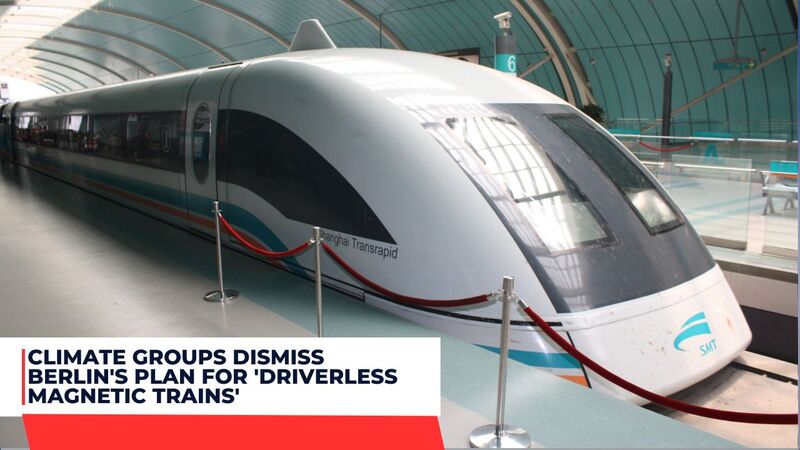Berlin plans to construct a five-to-seven-kilometer test track for a futuristic magnetic levitation (maglev) train, an eco-friendly transportation project which will be cheaper and quicker to construct than subway lines. A special climate fund of EUR80 million will fund this green transportation option.
Transit advocates will likely view it with suspicion; given that the CDU/CSU coalition government’s track record on public transit – cancelling plans for bike lanes and proposing to eliminate priority for cyclists altogether – it could prove controversial.
Berlin’s Driverless Magnetic Train Cost
German capital Berlin’s plan for an innovative’magnetic levitation train‘ has received approval. They will invest EUR80 million from a climate fund into building five to seven kilometers of test tracks for monorail, expected to make its debut within two years and help reduce traffic and car emissions.
Berlin has already explored maglev technology with two maglev lines; first was the M-Bahn which ran between Gleisdreieck in Kreuzberg and Kemperplatz in Tiergarten from 1984 to 1991 as a temporary solution to fill gaps left by Berlin Wall’s fall, only for it to be disassembled shortly after starting service so U2 subway service could resume operation again.
The new trains will operate without drivers; rather they will be guided by an automated system which controls their departure, movement between stations, door opening/closing operations and passenger levels accordingly. Furthermore, it has the capability of avoiding obstacles as well as changing direction if necessary.
Environmental impact
Maglev trains use revolutionary technology that drastically decreases energy usage by using less power, leading to reduced carbon emissions and less track length than traditional passenger rail lines. Their guideways also take up less space than their counterparts making maglev more environmentally-friendly (Luo, 2010).
Maglev trains have the advantage of tighter turns, eliminating the need to grade roadbed, while being easier to maintain. They use smaller fuel tanks which can be filled at trackside without stopping their service.
Maglev trains will also increase productivity by freeing passengers up from traffic jams so they can spend their time productively instead of being stuck in it. While this could be good economically, increased travel demands could increase VKT and emissions; so it is crucial that any new transportation system be carefully considered before implementation.

Safety
Following a magnetic levitation train crash into a maintenance vehicle in Germany last month, experts are demanding increased safety measures to avoid future incidents. The incident, caused by human error, illustrated how dangerous it is to operate such trains without drivers; its first of its kind event cast doubt upon long-term viability of this technology.
Berlin has decided to revive maglev transport, with a pilot route costing 80 million euros (about $85) being constructed over an approximate five to seven kilometer track and without drivers, according to Dirk Stettner, Chairman of the CDU parliamentary faction governing Berlin alongside junior coalition partner SPD.
He contends it will be quicker and cheaper to build than a new subway line and offer ongoing operational benefits such as reduced staffing needs; however, no details have yet been given on where or when construction of this pilot route could begin.
Technology
Maglev trains (also known as magnetic levitation monorails) employ powerful magnets to suspend themselves off of tracks and travel at incredible speeds – up to 350 kilometers per hour! German company Transrapid has already begun using maglev technology in Shanghai with high-speed lines running up to 350 kilometers per hour on this maglev track!
The train would use a single, elevated guideway that can be built either over existing roads or directly in the ground, using less energy and cost than traditional trains while operating without operator involvement or interruption from an experienced staff member. Additionally, its operations would also be unattended for greater autonomy and reduced maintenance requirements.
Environmentalists have expressed disbelief at the proposal. If funds for such a project exist, it should instead go toward effective efforts to lower CO2 emissions and adapt to climate change adaptation strategies. “We don’t want climate funds going towards ineffective projects that won’t do anything for the environment,” stated Heuser.






